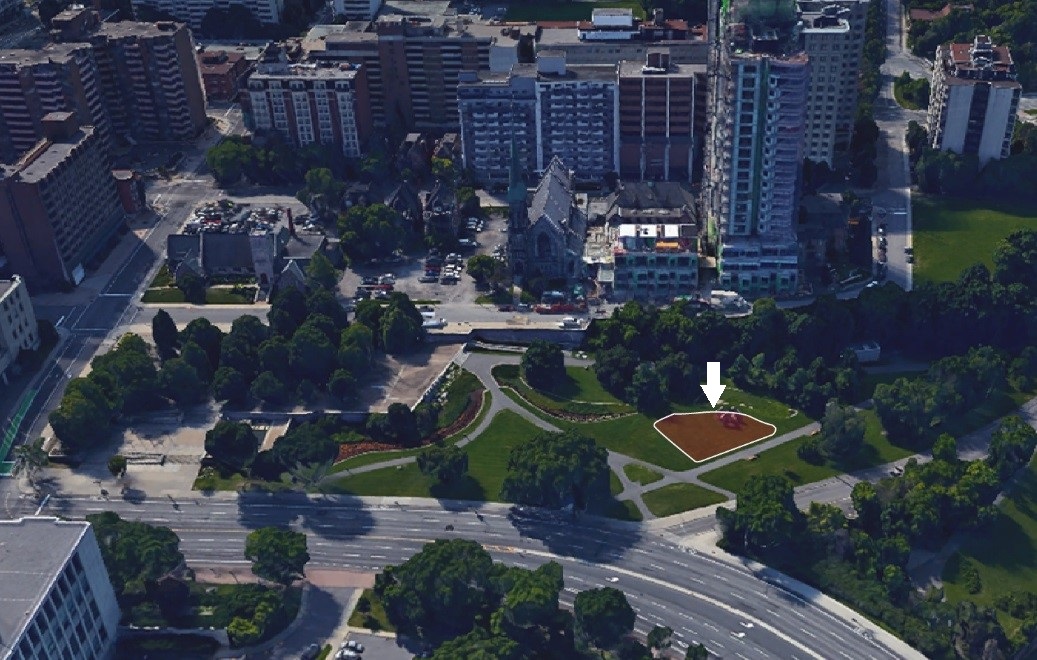
Last week, the Ottawa Citizen published an article by Randy Boswell, updating readers about the “controversial” $7.5-million Memorial to the Victims of Communism. The unveiling of the monument was originally planned for this month, but was been postponed. In October, the Canadian Heritage website noted that “although the Memorial to the Victims of Communism – Canada, a Land of Refuge was scheduled to be inaugurated by the end of 2023, the Government of Canada is doing its due diligence to ensure all aspects of the memorial remain compatible with Canadian values on democracy and human rights.”
The project initiated by the Conservative government in 2008 was originally expected to be in place more than a decade ago. Now the memorial is scheduled to be inaugurated in 2024, “at a date to be selected in consultation with the main proponent of the project, Tribute to Liberty.”
The memorial has been the focus of multiple controversies over its exact purpose, location, size and cost over the last 15 years, writes Boswell. The price tag for the project has reached an estimated $7.5 million — including $6 million in public funds — from an original budget of $1.5 million funded entirely with private donations from Tribute to Liberty, the charitable organization that is the driving force behind the monument.
“Arc of Memory” is a four-metre high, 21-metre-long sculptural installation, made from 4,000 bronze rods mounted on 365 steel fins in two sections or “wings”. Each of the 365 fins points at a unique angle of the sun every hour of every day. According to an official description of the project, “the memorial would be split in the middle at winter solstice, the darkest day of the year, inviting visitors to step through in a metaphorical journey from darkness and oppression to lightness and liberty.”
The landscaping is completed at the site immediately west of the Garden of the Provinces and Territories along Wellington Street and in the shadow of Christ Church Cathedral. The site borders Confederation Boulevard and the Parliamentary and Judicial Precincts and is situated near key federal institutions, including the Library and Archives Canada.
Concerns that the Memorial to the Victims of Communism could honour certain Nazi-linked individuals from wartime Europe — where nationalists in many regions resisting Soviet occupation were integrated with Nazi forces — had previously been raised over some donations made to Tribute to Liberty. Now, says Boswell, the latest postponement comes in the wake of the embarrassing tribute paid in Parliament in September to Yaroslav Hunka, an elderly Ukrainian-Canadian veteran who fought with a Nazi SS unit in the Second World War and later immigrated to Ontario.
Boswell notes that in 2022 in the academic journal Memory Studies, York University scholar Daphne Winland, author of a book about the Croatian diaspora community in Canada, wrote that “the contested legacy of the role of Croats in atrocities in Yugoslavia during World War II continues to generate negative publicity for the memorial and its supporters . . . Since its beginnings, the monument has raised concerns among journalists, historians, politicians and others about the historical complicity of some of the memorial’s supporters with fascist regimes.”
Apparently, the idea for a national memorial to victims of communism was sparked in 2007 during a visit by former federal Conservative cabinet minister Jason Kenney to Masaryktown, a private nine-hectare park in Scarborough, Ont., owned by Toronto’s Czech and Slovak communities. Kenney was visiting the site with Pavel Vosalik, then the Czech ambassador to Canada, when the two encountered a monument on the park’s grounds and began discussing the need for a more high-profile memorial. Titled Crucified Again, the Scarborough monument depicts a man crucified on a hammer and sickle, symbolizing Soviet oppression. The memorial had been unveiled in 1989 to honour the millions who had suffered or died at the hands of communist regimes throughout the world. Kenney fostered the planned memorial with Eastern European as well as Asian and African diaspora communities in Canada, whose members came from countries with a history of communist oppression. The initiative was seen to be in keeping with the minister’s mission to help his party wrestle votes away from the Liberals, who had traditionally counted on strong support from Canada’s immigrant populations. At the time, it was noted that more than eight million Canadians could trace their origins to countries with a history of oppressive communist rule.

The sites originally chosen for the monument raised controversy, and only after the federal Liberal government was elected in 2015 it was announced that a smaller version of the memorial would be built at a less prominent site next to the Garden of the Provinces and Territories. In late 2019, work finally began at the site. Construction is being overseen by the National Capital Commission. A review of all aspects of the project is taking place before next year’s unveiling to “address any concerns with the project, including the names to be inscribed on the Wall of Remembrance,” said Caroline Czajkowski, spokesperson for the Department of Canadian Heritage. “Names of individuals, groups or events were provided by donors to Tribute to Liberty, the proponent of the project. It is important that all aspects of this monument remain compatible with Canadian values on democracy and human rights.”
According to the Tribute to Liberty website, donations of $1,000 or more to the project entitle donors to have the name of a victim of communism inscribed on the memorial’s Wall of Remembrance and included in a “virtual Pathway to Liberty” at the group’s website. Larger gifts, such as $100,000 or more, also entitle donors to inscriptions on a plaque at the memorial site.






























